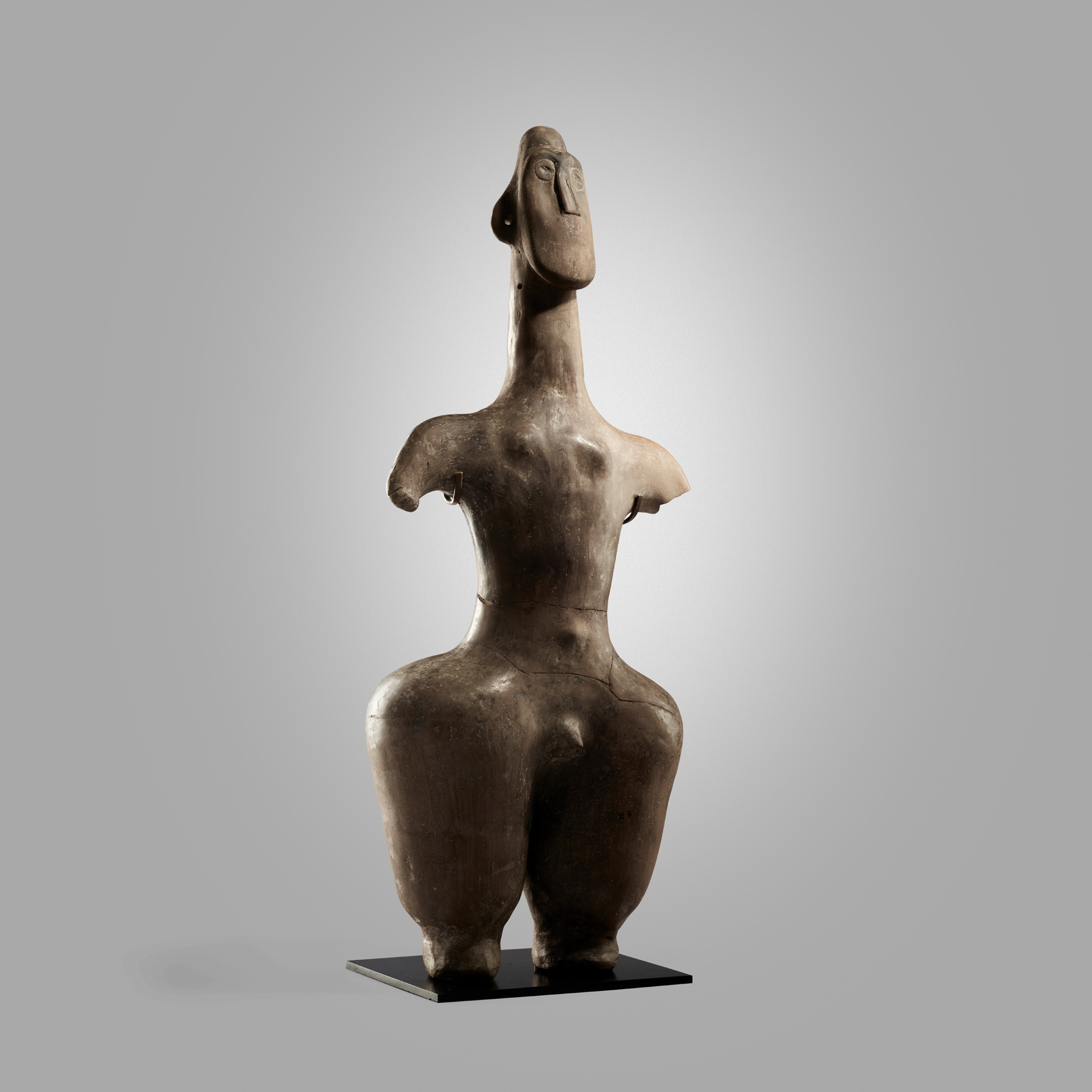MONUMENTAL AMLASH IDOL
IRAN, CIRCA EARLY 1ST MILLENNIUM B.C.
Estimate: £8,000 - £12,000
Auction: 13 March 2025 from 13:00 GMT
Description
terracotta, a superb, highly stylised standing figure depicted nude, with exaggerated broad hips and short tapering legs, arms curved forward towards the small breasts, elongated neck supporting a globular head with pierced ears, raised on a bespoke mount
Dimensions
47cm high
Provenance
Mahboubian Gallery of Ancient Art, New York, from at least 1962
Betty Parsens Gallery, New York
Samuel Dubiner (1914-1993), Tel Aviv, acquired from the above, thence by descent
Exhibited:
Amlash Sculpture from Iran (1963), 1963-1977, Betty Parsens Gallery, 24 West 57th Street, New York.
Footnote
These terracotta figurines, distinguished by their exaggerated, rounded hips and thighs, are believed to date from the late second to early first millennium B.C. and are widely interpreted as fertility symbols or representations of a mother goddess. The striking contrast between their corpulent lower bodies and more slender upper torsos, coupled with their simplified facial features, suggests a deliberate emphasis on fertility, abundance, and possibly social status. Their abstracted forms and stylised proportions reflect a sophisticated artistic tradition, one that prioritises symbolic representation over anatomical accuracy.
The bold abstraction of these figures, with their exaggerated forms and minimal facial features, has drawn comparisons to modern and surrealist aesthetics. The reduction of detail in favour of symbolic proportion parallels Henry Moore’s explorations of the human body, particularly his reclining female figures, which convey a similar interplay between mass, volume, and abstraction.
The present example is of exceptionally large proportions and represents a particularly fine specimen of the type. It possesses an outstanding provenance, first recorded with the highly regarded Mahboubian Gallery in 1962 and later included in the seminal exhibition Amlash Sculpture from Iran, held at the Betty Parsons Gallery in New York in 1963. Several pieces from this landmark exhibition have since entered major museum collections and world-leading private holdings, further cementing the significance of this piece within the corpus of Amlash art.
Please note that multiple instances of overpainting and restoration over time have rendered it impossible to obtain an accurate thermoluminescence test on this piece. However, the figure is stylistically consistent with known examples and is considered to date to the early first millennium B.C.

